7 Effective Strategies to Prevent Patient Falls in Hospitals
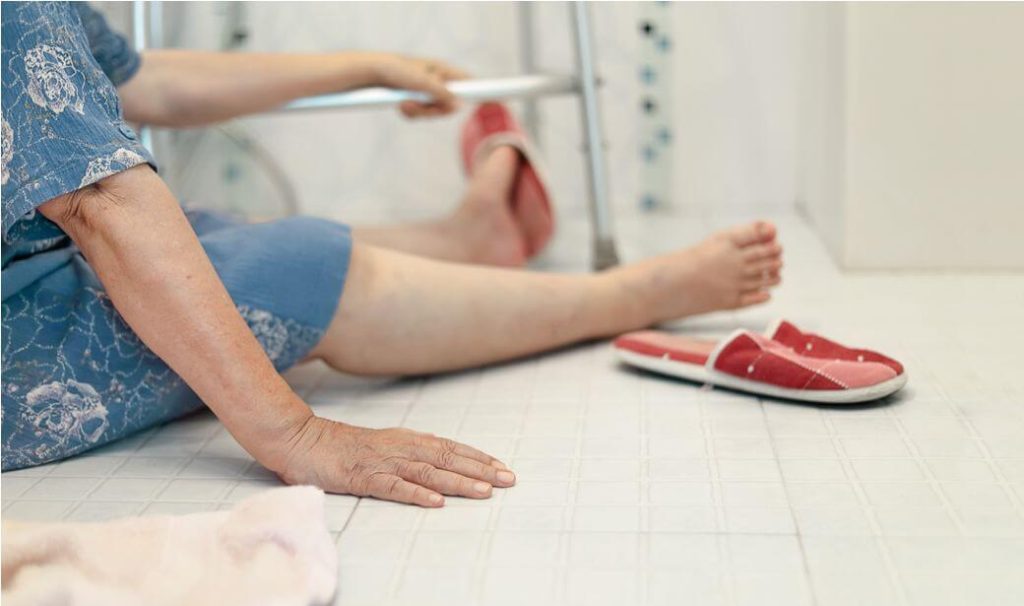
Each year, between 700,000 and 1,000,000 people in the United States experience an in hospital fall. A fall may result in fractures, internal bleeding, or lacerations, leading to increased health care utilization. Patient safety should be of utmost importance in your hospital. The good news is that many falls are preventable! In this blog post, we will explore seven effective strategies to prevent patient falls and promote a safe and secure environment in your facility.
Conduct Thorough Fall Risk Assessments
Your facility should conduct comprehensive risk assessments for each and every patient. Healthcare professionals can identify individuals that are a high fall risk by considering the following factors:
- Age
- Medical history
- Medication use
- Mobility limitations
This initial assessment allows healthcare providers to implement preventative measures tailored to each patient’s specific needs.
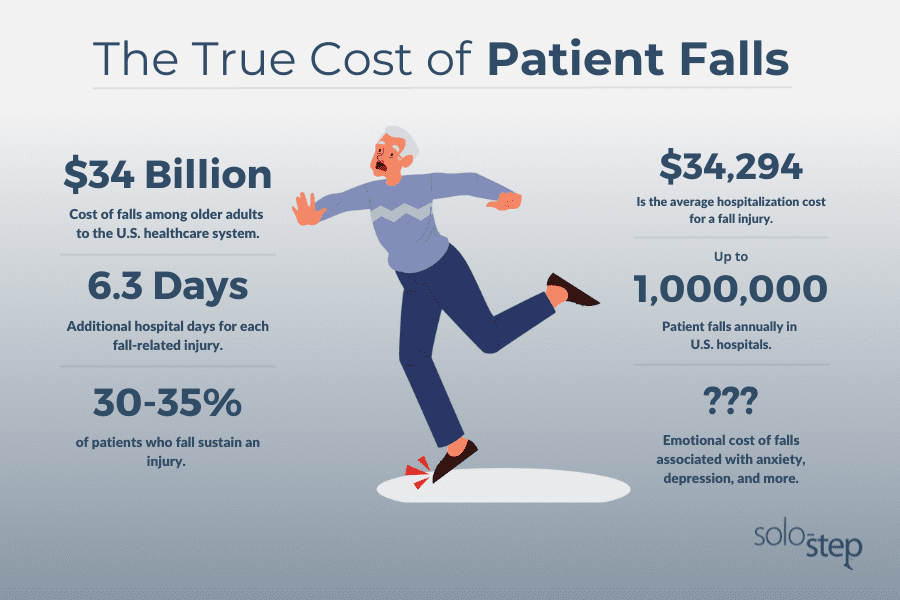
Maintain a Safe Environment
Creating a safe environment plays a crucial role in fall prevention. Your staff should ensure that hallways, patient rooms, and common areas are:
- Well lit
- Free from clutter
- Equipped with secure handrails
- Provided with adequate signage
Regular inspections of your facility can help identify and address potential safety hazards and risks of falls.
Promote Patient Education

Educating your patients and their families about fall prevention is key to reducing falls. Educate your patients and their families about the following:
- When/how to call for assistance (getting out of bed, using the bathroom, etc.)
- Education about potential side effects from medications
- Where side rails are located
- The importance of keeping their room clear of clutter & well lit
Answer any questions your patient and their families may have about their room, medications, etc. When your patients and families are aware of fall risks, they can be well prepared to take preventative measures.
Encourage Regular Exercise and Physical Therapy
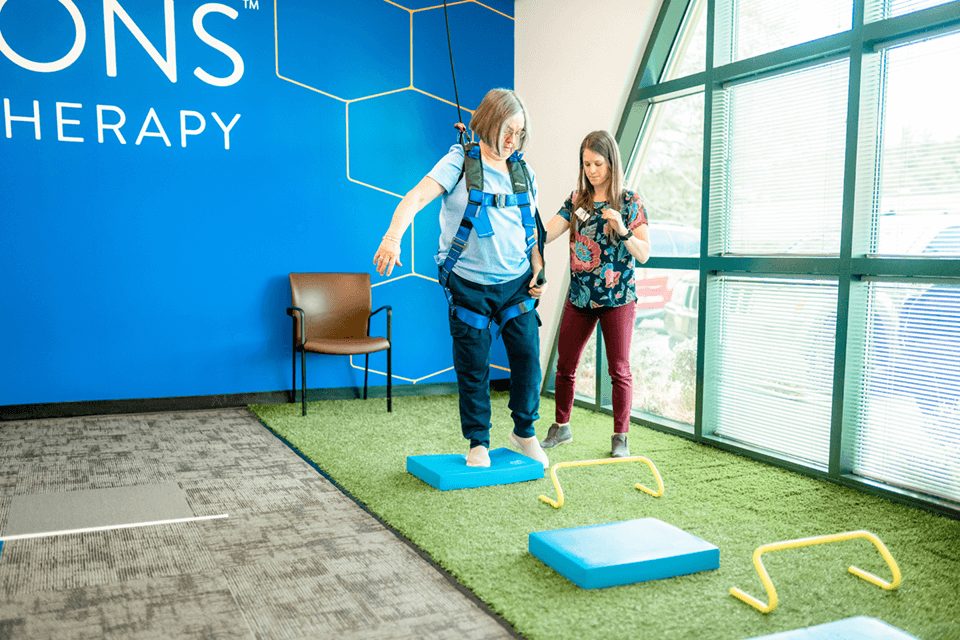
As a nurse or facility owner, you know that regular exercise and physical therapy are vital for maintaining strength, balance, and mobility. Consider collaborating with physiotherapists to develop customized exercise plans for patients. Encouraging patients to engage in these activities, under professional guidance, can improve muscle tone and stability, reducing their risk of falling. Physical therapy has many benefits, including:
- Pain relief and management
- Improved mobility and function
- Injury prevention
- Management of chronic conditions
- Overall improved quality of life
Implement Fall Prevention Technology
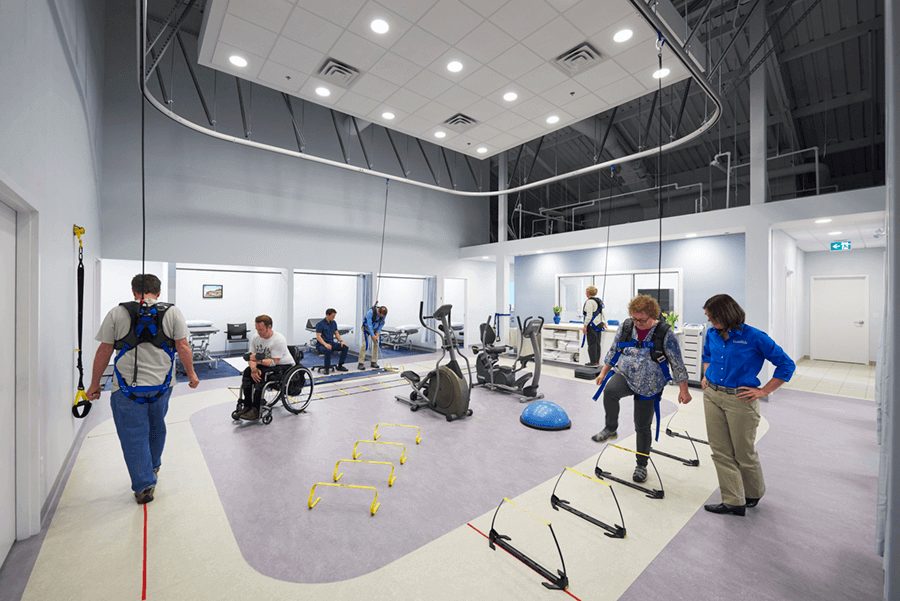
Advancements in technology have provided additional tools to help prevent patient falls. Consider investing in the following:
- Fall prevention alarms
- Bed and chair sensor pads
- Hip protectors
- An overhead track system
An overhead track and harness system, like the Solo-Step, is an overhead track that is mounted to your ceiling, connected to a lanyard and harness. The Solo-Step provides complete safety from falls and injuries during physical therapy or while moving from one location to another. Click here if you would like to learn more about the Solo-Step Overhead Track & Harness System!
Enhance Staff Training
Ensure your hospital staff conducts comprehensive training to ensure they are equipped with the knowledge and skills needed to prevent patient falls. Staff members should be trained in:
- Recognizing fall risk patients
- Proper patient handling techniques
- Communication strategies
- What to do if a fall occurs
Regular refresher courses and ongoing education will help your staff maintain a high level of awareness and competency to prevent falls and take necessary steps in case a fall occurs.
Collaborate with Multidisciplinary Teams
Fall prevention is a collective effort between various healthcare professionals, including:
- Doctors
- Nurses
- Physiotherapists
- Pharmacists
- Environmental services personnel
Fostering collaboration between these various teams will allow your hospital to establish comprehensive fall prevention programs that address all aspects of patient care. This will result in a safer environment for your patients!
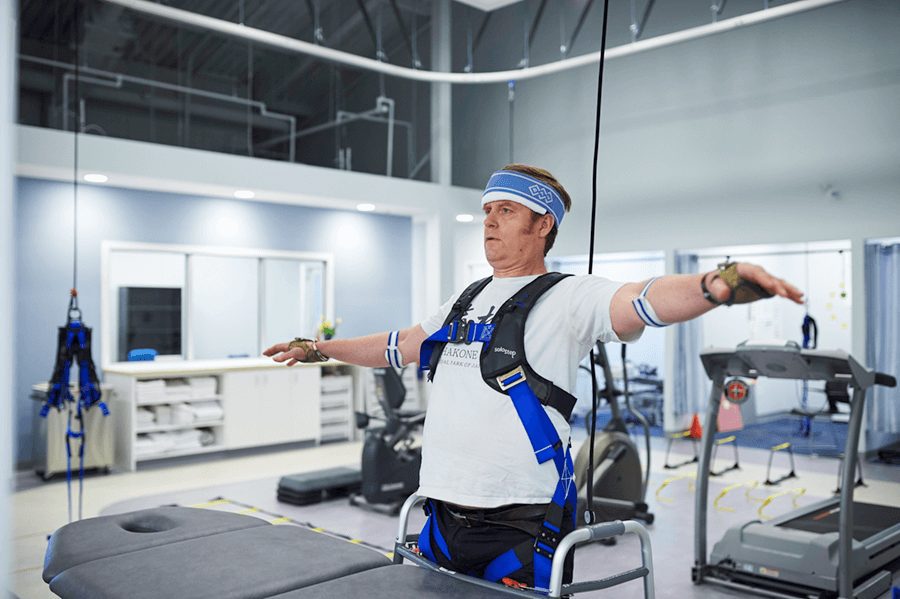
In conclusion, preventing patient falls in your hospital is crucial for ensuring patient safety and well being. By implementing these seven strategies, your hospital can significantly reduce the risk of falls and provide better care for your patients. Together, we can create a safer and more secure environment for individuals that may be at a risk of falling!